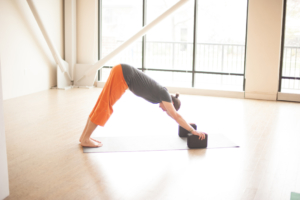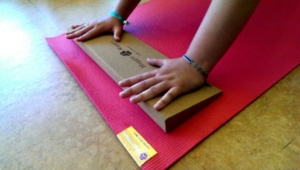
Vinyasa, based in Surya Namaskar (Sun Salutations), is arguably the most popular form of yoga these days. From traditional Ashtanga—where the idea for Vinyasa came from—to newer forms such as Power, flowing from one pose to the next is the standard in many classes.
Inherent in most of these flowing practices is a core sequence: Plank Pose to Chaturanga Dandasana to Urdva Mukha Svanasana (Upward Facing Dog) to Adho Mukha Svanasana (Downward Facing Dog). In many classes practitioners move through this sequence 20-plus times.
In all these poses, the upper body bears a big slice of the responsibility for supporting our weight. Yoga’s ability to promote upper body strength is one of its many benefits. But our wrists are not always ready or able to support what we ask of them in Sun Salutation-based practices.
What Do Our Wrists Do for Us?
Our wrists are comprised of a web of small, delicate bones, muscles, tendons and ligaments. The wrists help to control the fine movements of your hands and fingers by positioning and stabilizing your hand. These fine movements include things like writing, drawing, playing a musical instrument, typing, picking up and placing objects, etc.—things we do all day long simply to function in our world.
Our wrists are not designed to bear a lot of weight, especially when they are extended to 90 degrees, as in Plank Pose, Chaturanga Dandasana and Urdva Mukha Svanasana. In fact, some people’s wrists may not extend to 90 degrees at all, at least at first.
If your joints don’t easily extend to 90 degrees, you can help to save your wrists by gently stretching them in a non-weight-bearing position. Try this: Place your hands in Anjali Mudra (Prayer Position) at heart level. Slowly lower your hands, keeping the heels of your hands in contact with each other. It’s not important how low you go here. Simply move your hands down until you start to feel a stretch in your wrists and forearms. Take 5 to 10 deep breaths and release. Over time, this gentle stretch may help increase your flexibility.
Using Props to Save Your Wrists
Sometimes in the heat of a fast-paced Vinyasa practice, it’s hard to bring props into the mix. But if your Vinyasa practice is a “slow flow,” try these tricks:
 Use a yoga wedge in Downward Facing Dog Pose. Because Downward Facing Dog Pose is the one pose in the core sequence that doesn’t require your wrists to extend to 90 degrees, using a wedge (either cork or foam will do), as in this photo, can help you spread your weight more evenly throughout your entire hands. If we’re not guided to even out our weight, we tend to collapse all the weight onto our wrists in weight-bearing poses. This contributes to wrist injury. So try this modification in your Dog Pose.
Use a yoga wedge in Downward Facing Dog Pose. Because Downward Facing Dog Pose is the one pose in the core sequence that doesn’t require your wrists to extend to 90 degrees, using a wedge (either cork or foam will do), as in this photo, can help you spread your weight more evenly throughout your entire hands. If we’re not guided to even out our weight, we tend to collapse all the weight onto our wrists in weight-bearing poses. This contributes to wrist injury. So try this modification in your Dog Pose.- Use yoga blocks in Downward Facing Dog Pose. Placing your hands on yoga blocks in Dog Pose can help you deflect some of your body weight from your hands to your feet. (Check out the photo at the top of this blog.)
- Use a yoga wedge in Plank, Chaturanga Dandasana and Upward Facing Dog. Placing your hands on a yoga wedge in these three poses can redistribute your weight into the entire hand, rather than allowing you to collapse into your wrists. Place the high end of the wedge so that it faces you, and slants down away from you. Then place your hands on the wedge with your wrists on the high end. Be aware that using a wedge will change the balance and weight distribution of your poses, so it may feel strange at first.
Save Your Wrists in a Fast Flow
If your flow practice is fast paced and you don’t have time to fuss with props, try this:
- Practice Plank Pose, Chaturanga Dandasana, Upward Facing Dog Pose and Downward Facing Dog Pose on your forearms instead of on your hands. If your wrists are already inflamed, practice this way throughout your practice, and let your teacher know why so that he/she doesn’t try to encourage you to practice on your hands. If your wrists aren’t currently inflamed, you can practice the core sequence this way some of the time as a preventative.
Wrist problems are not uncommon these days, partly because we spend so much time on computers and smart phones. But yoga practice, especially practices that are heavy on hand weight-bearing poses, can contribute as well. These tips can help you build strength and flexibility, and can offer welcome relief for overworked wrists.
Here are some hand-healthy moves you can practice any time to relieve wrist and hand discomfort.
If you have suggestions to save your wrists in yoga practice, we’d love to hear them.
